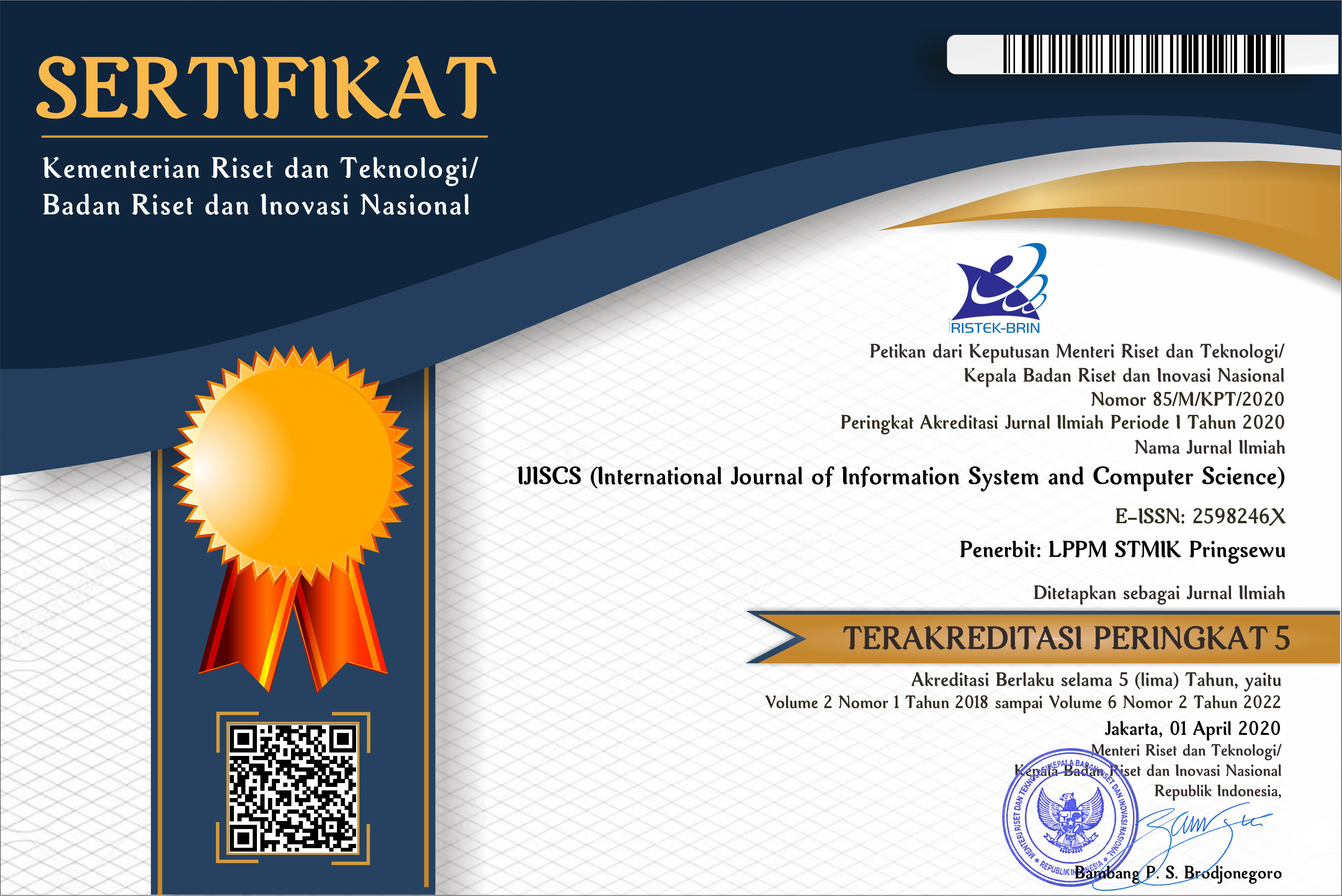DEVELOPMENT MODELLING OF E-SCM WITH IMPLEMENTATION OF PROJECT PLANNING METHOD TO IMPROVE PRODUCTION MANAGEMENT OF MICRO BUSINESS IN NORTH MERUYA JAKARTA
(1) Universitas Mercu Buana
 Corresponding Author
Corresponding Author
Abstract
Project Planning is an important phase in a production supply chain flow in the business. In project planning, information about the project achievement targets will be described in a series of activities and measurement of the clear target time for completion of work. If this concept of project planning can be applied in the development of micro-business sector in North Meruya Jakarta, so it will greatly assist entrepreneurs especially beginners in planning business operations in a measured and systematic manner. This will also be a solution for how the concept of electronic Supply Chain Management (e-SCM) system can be accommodated in the micro-business sector to increase profitability and economic growth. As we understand that micro-business entrepreneurs often find it difficult to survive in the problems of production, capital and business competition. So they need to understand the right production concepts and tools such as e-SCM. Therefore, this research will try to apply the concept of project planning method with e-SCM. e-SCM system design will use the method of Rapid Application Development (RAD). The final goal of the research is to provide solutions for changing the concept of production management for micro-business entrepreneurs in Meruya Utara Jakarta.
Keywords
References
Hong Yeow Ong, Chen Wang & Nurshuhada Zainon. (2016). “Integrated Earned Value Gantt Chart (EV-Gantt) Tool for Project Portfolio Planning and Monitoring Optimization”. Engineering Management Journal, 28:1, 39-53, DOI : 10.1080/10429247.2015.1135033.
Rabiu Yusuf et.al.,. (2017). “The Review of Supply Chain Management Systems and Firm Performance”. International Journal of Management Research & Review. IJMRR/Feb 2017/Volume 7/Issue 2/Article No-5/113-122. ISSN : 2249-7196.
Adi Baskara Joni, I. Dewa Made. (2018). “Analisa Implementasi E-SCM Pada Model Bisnis Distribution Outlet (DISTRO)”. Jurnal Pendidikan Teknologi dan Kejuruan Vol. 15, No.1, Januari 2018, Hal : 146. P-ISSN : 0216-3241;E-ISSN : 2541-0652.
Sim, Chzia. P,. (2015). “RFID in SECM and Factors Including Identification Technology Evidence from BSA Manufacturing, Automotive-Malaysia”. Jurnal UMP Social Sciences and Technology Management. Vol. 3, Issue 1, 2015.
Zakir, Fatima, et.al. (2016). “Effect of e-Supply Chain Management on the Business Process of Airline Industry”. International Journal of Management Sciences and Business Research. July-2016 ISSN (2226-8235) Vol-5, Issue 7.
Susilo, Ferri, A. & Triana YS. (2018). “Digital Supply Chain Development in Blockchain Technology Using Rijndael Algorithm 256”. International Conference on Design, Engineering and Computer Sciences 2018. Doi : 10.1088/1757-899X/453/1/012075.
TSVETKOV, Konstantin. S. (2016). “Project Management for Students From University of Agribusiness and Rural Development and Software for Its Application”. Balkan and Near Eastern Journal of Social Sciences. Tsvetkov, 2016 : 02 (03).
Aulady, M & Orleans, C. (2016). “Perbandingan Durasi Waktu Proyek Konstruksi Antara Metode Critical Path Method (CPM) dengan Metode Critical Chain Project Management (Studi Kasus : Proyek Pembangunan Apartemen Menara Rungkut)”. Jurnal IPTEK, Vol.20 No.1, Mei 2016. ISSN : 1411-7010. e-ISSN : 2477-507X.
Kurniawan, Ardy & Kusumawardhani, Amie. (2017). “Pengaruh Manajemen Rantai Pasokan Terhadap Kinerja UMKM Batik di Pekalongan”. Diponegoro Journal of Management. Volume 6, Nomor 4, Tahun 2017, Halaman 1-11. ISSN (Online) : 2337-3792.
Arianie, Ganesstri. P & Puspitasari, Nia. B. (2017). “Perencanaan Manajemen Proyek Dalam Meningkatkan Efisiensi dan Efektifitas Sumber Daya Perusahaan (Studi Kasus : Qiscus Pte Ltd)”. J@ti Undip : Jurnal Teknik Industri, Vol. 12, No. 3, September 2017.
Indrajit, R.E dan Djokopranoto. (2003). ”Konsep Manajemen Supply Chain : Cara Baru Memandang Mata Rantai Penyediaan Barang”. Jakarta : Grasindo.
Turban, et.al. (2010). ”Electronic Commerce 2010 : A Managerial Perspective 6th Edition”. Prentice Hall; 6 edition.
Sairun & Ranggadara, Indra. (2018). “Development of Pre Order Syar’i Clothes Based on Android Application”. International Research Journal of Engineering and Technology (IRJET). Volume 05 Issue 12, Dec 2018. E-ISSN : 2395-0056. P-ISSN : 2395-0072.
Aswati, et.al. (2017). “Studi Analisis Model Rapid Application Development Dalam Pengembangan Sistem Informasi”. Jurnal Matrik Vo.16. No.2, Mei 2017. ISSN : 1858-4144.
Kendall, J.E. & Kendall, K.E. (2010). “System Analysis and Design”. Prentice Hall Press.
"Glossary of Defense Acquisition Acronyms and Terms: Contract Work Breakdown Structure (CWBS)". Defense Acquisition University. Retrieved 19 September 2017.
Sommerville, Ian. (2016). "Software Process Models." In Software Engineering Tenth Edition, 47. Pearson, 2016.
Kurnianda, Nia Rahma. (2018). “Database Design for Customer Retention and Loyalty Administration Information System”. IJCSMC :: International Journal of Computer Science and Mobile Computing, Vol. 7, Issue. 10, October 2018, pg.1-8. ISSN 2320-088X.
Retnowardhani, Susilo and Yaya S. Triana. (2018). ”Design Of Service Application For Auto Detailing : A Case Study Of Jetwash Auto Spa Tangerang”. IRJCS :: International Research Journal of Computer Science, Volume V, 422-434.doi://10.26562/IRJCS.2019.AUCS10081.
Article Metrics
Abstract View : 420 times
: 420 times Download : 92 times
Download : 92 times
DOI: 10.56327/ijiscs.v5i1.948
Refbacks
- There are currently no refbacks.






